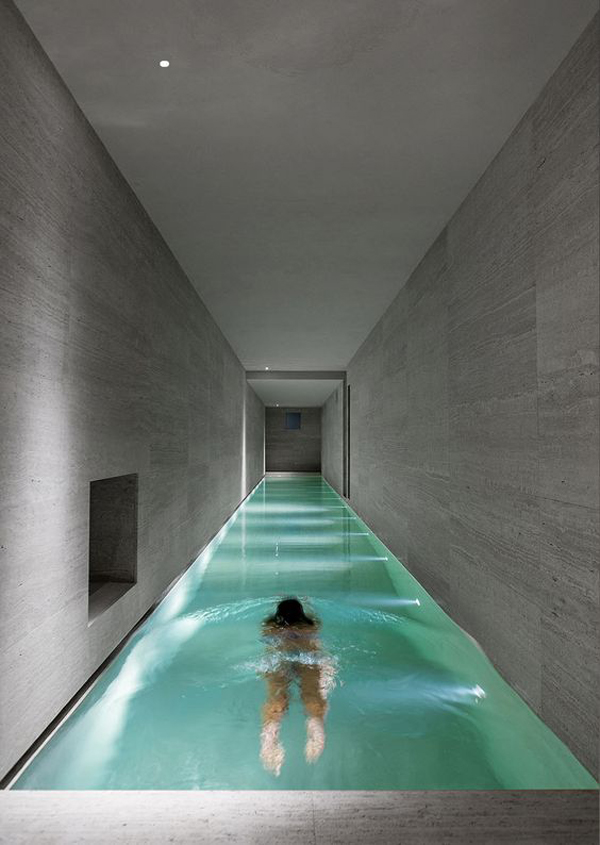Table of Content
In a commercial theater, you'll usually be watching on a screen that's anywhere from 30 to 90 feet wide by 10 to 30 feet tall. You're not going to find any options that big for your home , but the size isn't the real question here. Depending on your location, it might make more sense to install in-ceiling speakers when configuring your surround sound, as doing so will ensure a cleaner, more authentic surround sound experience. Though many modern speakers have auxiliary plug-ins similar to a headphone jack, some speakers still use speaker wire and clamps to connect the base speakers to the outer speakers. If this is the case for you, you'll need a set of wire strippers to remove about an inch from each end of a speaker wire.Make sure that your speaker wire is not attached to anything when you do this. If you can't see the speakers from where you are sitting, the sound is being blocked off.
You could also buy doors that are meant for sound proofing. If you have a heavy door, be sure to design you door framing accordingly. In addition, you should do whatever you can to isolate the walls from the floor and ceiling. I made rubber isolating fasteners for the top plate and then just used double sill foam in between the bottom plate and the concrete floor. Do you wish you had a home theater that doubled as a comfortable sleeping area?
How To Optimize Room EQ In Your Home Theater Receiver Setup
We suggest you read over the following articles in advance to have a better understanding of the “why” behind our suggestions. I used carpet in most of my room with some vinyl plank in the back where we mostly eat and drink. The bar is basic 2x4 construction and ties into the riser. Include a bar and sports memorabilia on the walls to make your home theater a true entertainment center.

Many TVs feature Dolby Vision HDR technology, and some are also enabled with Dolby Atmos sound. With Dolby Atmos, sound moves all around you in three-dimensional space so that you feel like you are inside the story. Manufacturers are always adding new features to TVs so careful shopping can really make a difference to your overall setup. Having your own home theater means you've got a great display and audio set up going on with your media. If you play games, stream movies, or listen to music on your PC, then connecting your computer to your home theater is highly encouraged. You'll be able to access media content on your computer, but experience that content on a big screen with awesome sound.
Choosing Your Home Theater Components
If you have a larger budget, consider separate components as you can just replace the processor every few years if you want to have the latest and greatest. Sound systems are available in a range of prices — we've pulled together a list of general guidelines to help you below. You might also want to consider adding a TV enabled with Dolby technologies to your sound system for the full Dolby experience.

You also have the option of connecting a VCR or DVD recorder directly to the TV and then letting the TV pass audio to the home theater receiver. To connect either a CD or record player to an AV receiver, use the player's analog or digital audio outputs. If you have a CD recorder, connect it to the AV receiver through the Audio Tape Record/Playback input/output loop connections . The setup procedure is different if you have a video projector instead of a TV. Connect the incoming cable to the box if you receive programming via a cable or satellite box. You then have two options to connect your cable or satellite box to the TV and the rest of your home theater system.
Did this article help you?
With a low lag time of 14 milliseconds, this set also will handle fast-paced gaming well. There are genuine technical issues supporting each position, but for our purposes, it's really just a question of screen size and field of view. To simplify the above discussion of field of view, we've run some basic calculations.

As you go through the connection process, consider using a label printer to identify the cables and wires if you need to make changes. To further optimize your speaker setup, use the built-in test tone generator, room correction, or automatic speaker setup systems that may come with the receiver. Even if your receiver has an automatic speaker setup or room correction system, having a sound meter for manual tweaking can't hurt.
How to Choose the Best Home Theater Receiver
Robert Silva has extensive experience in consumer electronics and home theater product sales and sales supervision; he has written about audio, video, and home theater topics since 1998. Robert has articles published on HBO.com and Dishinfo.com plus has made appearances on the YouTube series Home Theater Geeks. Most theater audio systems have a balancing feature that allows you to balance speaker levels based on the location of the theater users. Note that it is not allowable by electrical code to run electric power lines through open wall chases. To run wiring from the media closet in the rear of the room to the screen in the front of the room, build chases, or trays, that run the length of the room at about 1-inch below the level of the ceiling.
For this, we turn to the Vizio M-Series M512a-H6, a soundbar that offers true Dolby Atmos, with upfiring speakers instead of simulated Atmos effects, a pair of surround speakers and a subwoofer that delivers big bass. It's a full 5.1.2 system that can connect easily to your TV for simple setup and full-featured sound, and it sells for less than $500, keeping us right in budget. When it comes to what kind of screen is best, home theater enthusiasts have been debating for a long, long time. Some prefer the picture quality afforded by the latest big screen TVs. Others demand the darkened room and projected image of the movie theater. At the core of every home theater is the desire to recreate the cinematic experience of the movie theater in your home.
But what if your home theater is also a living space, with windows? Here you’ve got the issues of soundproofing as well as blocking out light. But you don’t want to board up your windows and have a permanently dark family room. Long, heavy blackout curtains can do both while you’re watching movies, and quickly be pulled back to enjoy the morning light over a coffee. If you go with a bar top, select a countertop that fits the design of you room.

Other homeowners want a more modest design that complements the overall decor of the property. Finally, when the opening titles play on your home theater project, the decision is yours. TYM Smart Homes & Home Theaters has designed a state-of-the-art automated theater room that will provide you with an excellent movie-watching experience. The second common mistake is that the room has windows or lighting issues. Room lighting definitely affects the TV and video projector viewing experience.
Deirdre Sullivan is an interior design expert and features writer who specializes in home improvement as well as design. She began her career as an assistant editor at Elle magazine and has more than a decade of experience. Deirdre contributes content for brands including The Spruce and Realtor.com, and has been a featured speaker at various conferences. Read the owner's manual and illustrations for your components, paying close attention to the connection and setting options.

Jessica Wrubel has an accomplished background as a writer and copy editor, working for various publications, newspapers and in public libraries assisting with reference, research and special projects. In addition to her journalism experience, she has been educating on health and wellness topics for over 15 years in and outside of the classroom. Brian Westover is currently Lead Analyst, PCs and Hardware at PCMag. Until recently, however, he was Senior Editor at Tom's Guide, where he led the site's TV coverage for several years, reviewing scores of sets and writing about everything from 8K to HDR to HDMI 2.1.
If your DVD player doesn't have an HDMI output, use another available video output combined with a digital optical/coaxial cable from the player to the AV receiver. If your home theater receiver only offers HDMI pass-through, you may need to make additional analog or digital audio connections between the player and the receiver. There are other connection options to consider if you have a 3D Blu-ray Disc player or 3D TV. If so, connect the HDMI output from the player to the receiver and from the receiver to the TV. If you have ever dreamed of hunkering down in your own home theater, this dream can be a reality. A dedicated home theater allows you to binge-watch your favorite streaming shows, settle into movies, or engage in a little gaming—all on a big screen from the comfort of your own home.

No comments:
Post a Comment